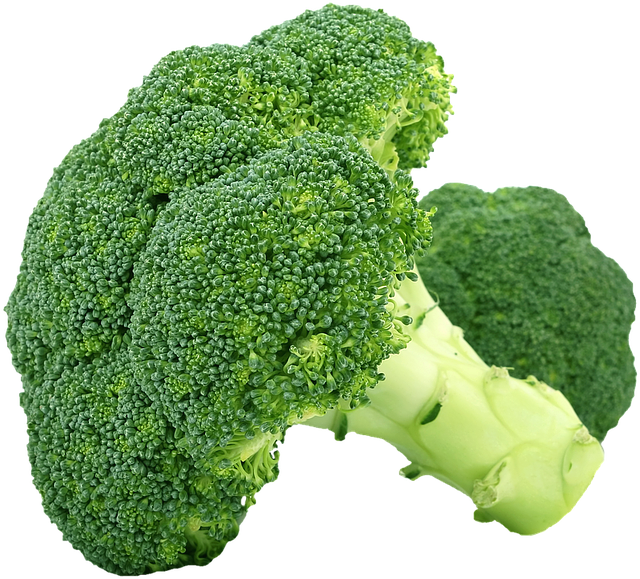Most athletes understand that adequate rest after workout is critical to peak performance. Nonetheless, many people still feel terrible when they take a day off. Understanding the numerous advantages of taking a day off can help alleviate this guilt.
Rest, for example, is physically required for muscles to recover after workout, renew, and strengthen. Rest days and active recovery can help recreational athletes achieve a better balance between home, work, and fitness goals. For the muscles that were worked, the recommended recovery period is 48-72 hours.
The Advantages of a Rest Day After Workout
Rest days are essential for all levels of athletes. Obtaining enough sleep has both physiological and psychological advantages.
Encourages Muscle Recovery
Exercise depletes the body’s energy reserves, often known as muscle glycogen. It also causes muscle tissue to deteriorate. Allowing enough time for muscular recovery helps the body to “correct” both of these problems by restoring energy stores and rebuilding damaged tissues.


The performance will suffer if you do not take enough time off to refill glycogen stores and allow your muscles to recover from damage. Continued neglect for replenishment might result in chronic muscle tightness and pain.
Aids in Overcoming Adaptation
According to the adaptation principle, when we subject our bodies to the stress of physical exercise, they adjust and become more effective. It’s the same as learning a new skill. It’s challenging at first, but it soon becomes second nature. Once you’ve adapted to one type of stress, you’ll need more to keep moving forward.
There are limits to how much stress one’s body can take before breaking down and injuring itself. Too much work done too quickly can result in injury or muscle damage. Doing too little too slowly will not yield any results. This is why personal trainers design programs that gradually increase duration and intensity while allowing for rest days after workout.
Prevents Overtraining
Overtraining syndrome can occur when there is insufficient rest and recuperation time. It is estimated that 60% of top athletes and 30% of non-elite endurance athletes suffer from this illness. And once you’ve got it, it might be difficult to get rid of.
Overtraining has numerous drawbacks. According to research, it can increase body fat, increase your risk of dehydration, impair your libido, and worsen your mood.
Relaxing is encouraged.
Taking a day off also offers your mind and body a break and protects your schedule from being overly congested. Spend extra time with family and friends on your free day. Replace your regular exercise time with a hobby.
It is all about balance when it comes to living a healthy life. It entails figuring out how to divide your time between home, work, and your fitness program. Taking a day off allows you to focus on these other areas while allowing your body the time it needs to recuperate from your workouts.
What Exactly Is Short-Term Recovery?
Short-term healing happens in the hours following vigorous activity. That could involve completing low-intensity activity throughout your workout’s cool-down period, which has been related to improved performance. It could also include eating the correct foods and liquids after exercise to replenish glycogen or muscle stores and fluids while improving protein synthesis.
What to Do on a Day Off
On a rest day, you can engage in two types of recuperation: passive recovery and active recovery. Passive recovery entails refraining from exercising for the full day. Active recovery is when you engage in low-intensity activity with little to no stress on your body.
The body tries to restore soft tissue during active healing (muscles, tendons, and ligaments). Active recovery promotes blood circulation, which aids in the clearance of waste products produced by muscle breakdown as a result of exercise. Then new blood can enter, bringing nutrients to help repair and rebuild the muscles. Walking, stretching, and yoga are examples of active recovery exercises.
Sleep is also essential. Get lots of rest, especially if you’re working out hard. Even one or two nights of insufficient sleep can reduce performance during sustained bouts of activity, but not peak performance. Consistently poor sleep, on the other hand, can cause hormonal alterations, notably those connected to stress, stress hormones, muscle repair, muscle development, and, worst of all, performance.
According to research, sleep deprivation can cause an increase in cortisol (a stress hormone), a decrease in the activity of human growth hormone (which is crucial for tissue repair), and a decrease in glycogen synthesis.
When Should You Take a Day Off?
The number of rest days required depends on the type and intensity of your workout. If you engage in high-intensity physical exercise, the American Council on Exercise (ACE) recommends taking a rest day every seven to ten days.
Some fitness plans include rest days more frequently, such as twice a week. One of these days could be used as a passive recovery day, allowing you to rest from exercise entirely. The other could concentrate on active recovery or modest exercise.
If you follow a seasonal training plan, recovery days and even weeks may be included. Periodization entails changing training routines throughout the year, including cross-training, modifying workout types, and varying exercise intensity, time, and distance.
Indications You Need a Day Off
Regardless of your fitness routine, it is critical to pay attention to your body. It will notify you if it needs a break day, even if it is a day when you should be working on exercise.
In one study, 605 competitive athletes were polled regarding signals that they required a rest day. Overtraining symptoms most typically reported included overall fatigue, an inexplicable decline in performance and musculoskeletal aches and pains.
If you feel anxious, moody, have trouble sleeping, lose your appetite, or are unhappy or stressed, this can be a sign that you are pushing yourself too hard. Stress at work or at home is another reason to take a day off and allow your entire body to relax and recover.
What should I eat on a day off?
A rest-day food that promotes recovery from high-intensity exercise includes protein (to aid in muscle repair and growth) as well as carbohydrates (to restore the used glycogen). Talking with a nutritionist can assist you in determining how much of each you require.
How often should I take a “rest day” should I take?
If you are alternating strength and cardio workout, aim for at least one “rest day” for every 7 – 10 days. Pay attention to your body. Schedule additional rest days if necessary.
Here are some pointers to help you recover quickly after exercise.
Rest and recovery are key components of every fitness regimen. Your after-exercise recovery method has a huge impact on your sports performance and fitness gains and helps you to train much more effectively. Regrettably, most people do not have a post-exercise recuperation strategy.
The Value of Recovery
Muscle and tissue regeneration and strength building require recovery after training. This is especially important after a tough weight training session.
A muscle requires anywhere from 24 to 48 hours to recover and rebuild, and using it too soon results in tissue destruction rather than development.
What this means is that you should never work out the same muscle parts twice in succession when it comes to weight training regimens. There are as many healing strategies as there are athletes. The following are some of the most frequently suggested by professionals.
Replenish fluids you lost.
You lose tons of fluid during exercise by sweating, and while you should replace it during exercise, filling up afterward is a simple approach to improve your recovery.
Every metabolic process and nutrient transport in the body is supported by water, and drinking sufficient water will boost every bodily function. Proper fluid replacement is even more crucial for endurance athletes who sweat a lot for long periods of time.

Make Recovery Foods a Priority
After exhausting your energy reserves through exercise, you must replenish them if you want your body to heal, repair tissues, grow stronger, and be ready for the next challenge.
This is especially vital if you are doing endurance activity on a daily basis or trying to gain muscle.
Ideally, you should eat within 60 minutes of finishing your workout and include some high-quality protein and carbohydrates.
Rest and relaxation after workout
Time is the most effective way to recover (or heal) after almost any disease or injury, and it also works after a strenuous workout. If you give your body enough time, it has an astonishing ability to heal itself.
Relaxing after a strenuous workout allows the repair and recuperation process to proceed at its own speed. That is not the only thing you can or should do to promote recovery, but it is sometimes the easiest thing to do.
Make It Longer
Consider mild stretching after a strenuous workout. This is an easy and quick approach to help your muscles recuperate.
Carry out Active Recovery
Simple, modest action (such as a brisk walk or a bike ride) promotes circulation, which aids in the delivery of nutrients and waste products throughout the body.
In principle, this speeds up muscle regeneration and refueling.
Get a Massage
Massage feels nice, promotes circulation, and allows you to relax completely.
You can also try foam roller and self massage techniques to relieve tight muscles while avoiding the high cost of a sports massage.
Take a Cold Bath
To recuperate faster, decrease muscular soreness, and prevent injury, some athletes swear by ice baths, ice massage, or contrast water treatment (alternating hot and cold showers).
The assumption behind this therapy is that by continually constricting and dilating blood vessels, waste items in the tissues are removed (or flushed out).
How to Implement Contrast Water Treatment
Alternate 30 seconds of cold water with 2 minutes of hot water in your post-exercise shower. Repeat four times, pausing for one minute between each hot-cold spray. If you have access to a spa with both hot and cold tubs, you can soak in both at the same time.
Get Some More Sleep
Amazing things happen in your body while you sleep. Anybody who exercises on a regular basis must get enough sleep. Your body produces Growth Hormone (GH) during sleep, which is mostly responsible for tissue development and repair.
Experiment with Visualization Exercises
Including mental practice in your workout program can be extremely beneficial for any athlete. Spending time practicing mental rehearsal or adhering to a mindfulness meditation program can aid in the processing of a calm, clear mindset while reducing anxiety and reactivity.
Learning how your mind works, how thoughts can bounce about, and how you don’t have to connect to any of them is a fantastic method for an athlete to recuperate both mentally and physically.
Moreover, practicing positive self-talk might aid in changing the internal conversation. During your recuperation days, consider using both sorts of mental practice.
Prevent Overtraining
Creating a good workout plan in the first place is a simple method to recover faster. Excessive exercise, high-intensity training at every session, or a lack of rest days will definitely limit your fitness improvements and impede your recovery attempts.
To Conclude
Listening to your body is the most crucial thing you can do to recover rapidly. If you are weary, sore, or notice a reduction in performance, you may require longer recovery time or a vacation from exercising entirely. You don’t have to force yourself to go slow the day after a heavy workout if you feel strong.
In most circumstances, your body will tell you what it requires when it requires it. Many of us, though, ignore or discount such signs with our own self-talk: “I can’t be weary, I didn’t run my best yesterday,” or “No one else needs two rest days after that workout; they’ll think I’m a wimp if I go slow today.”


